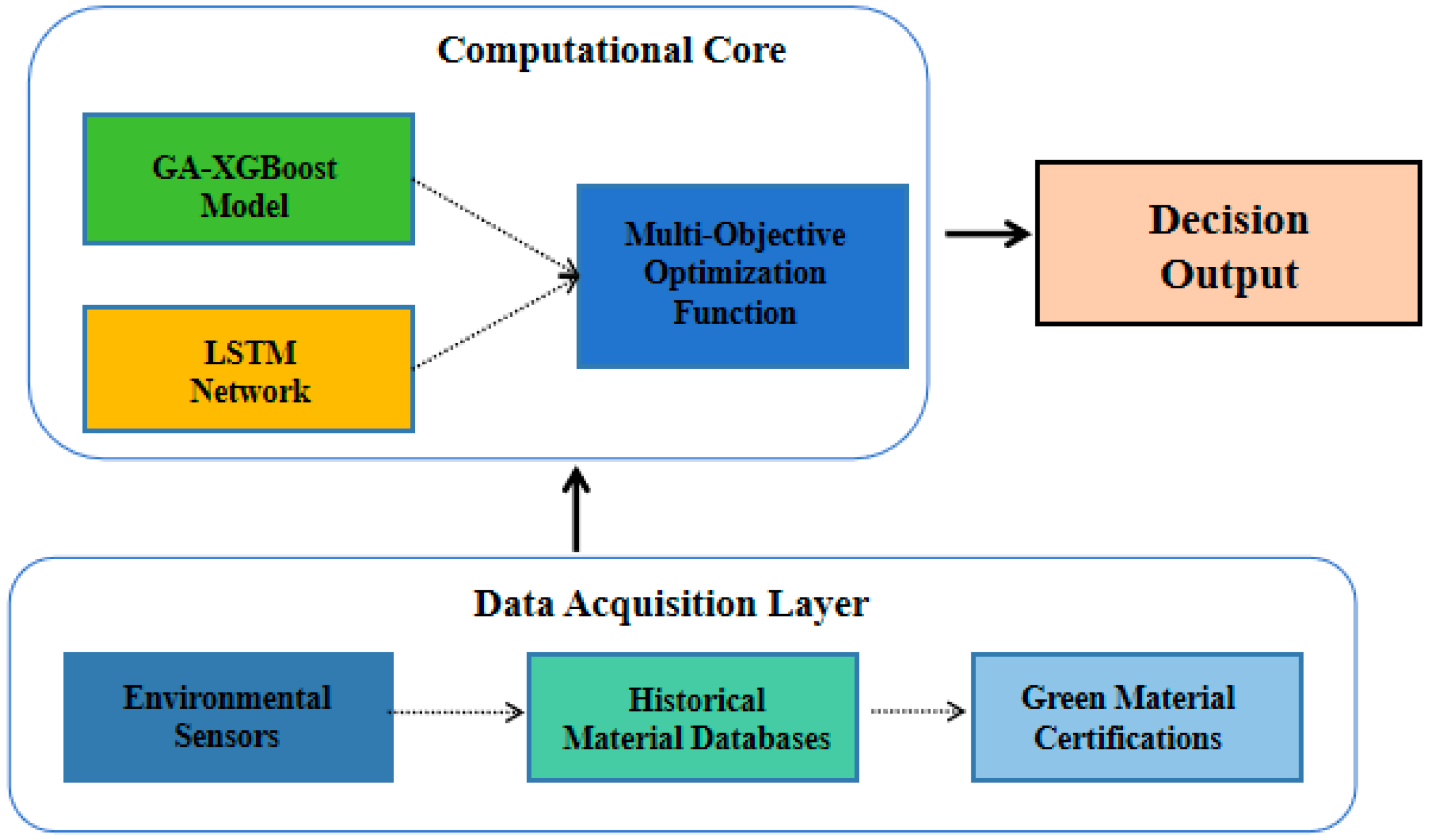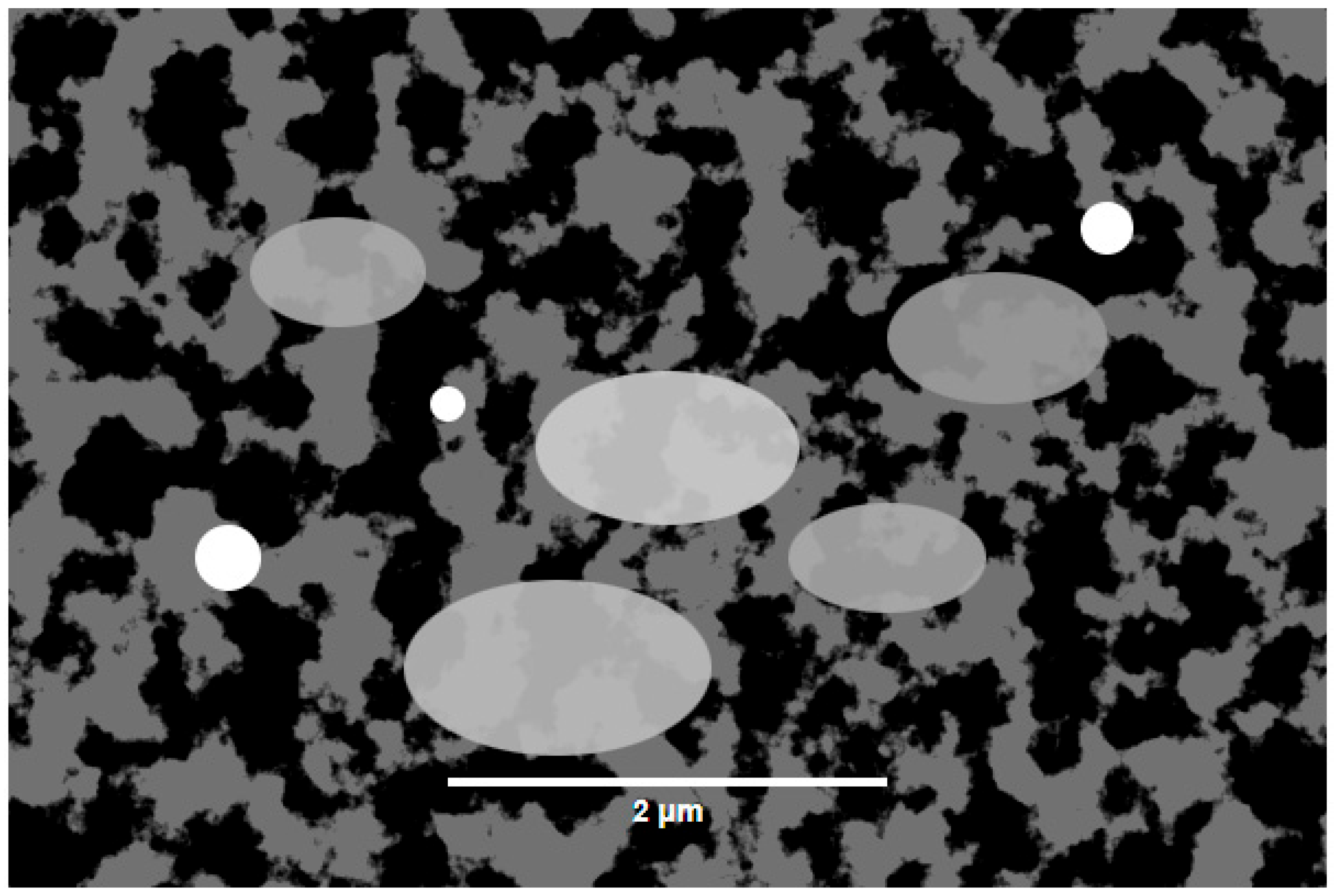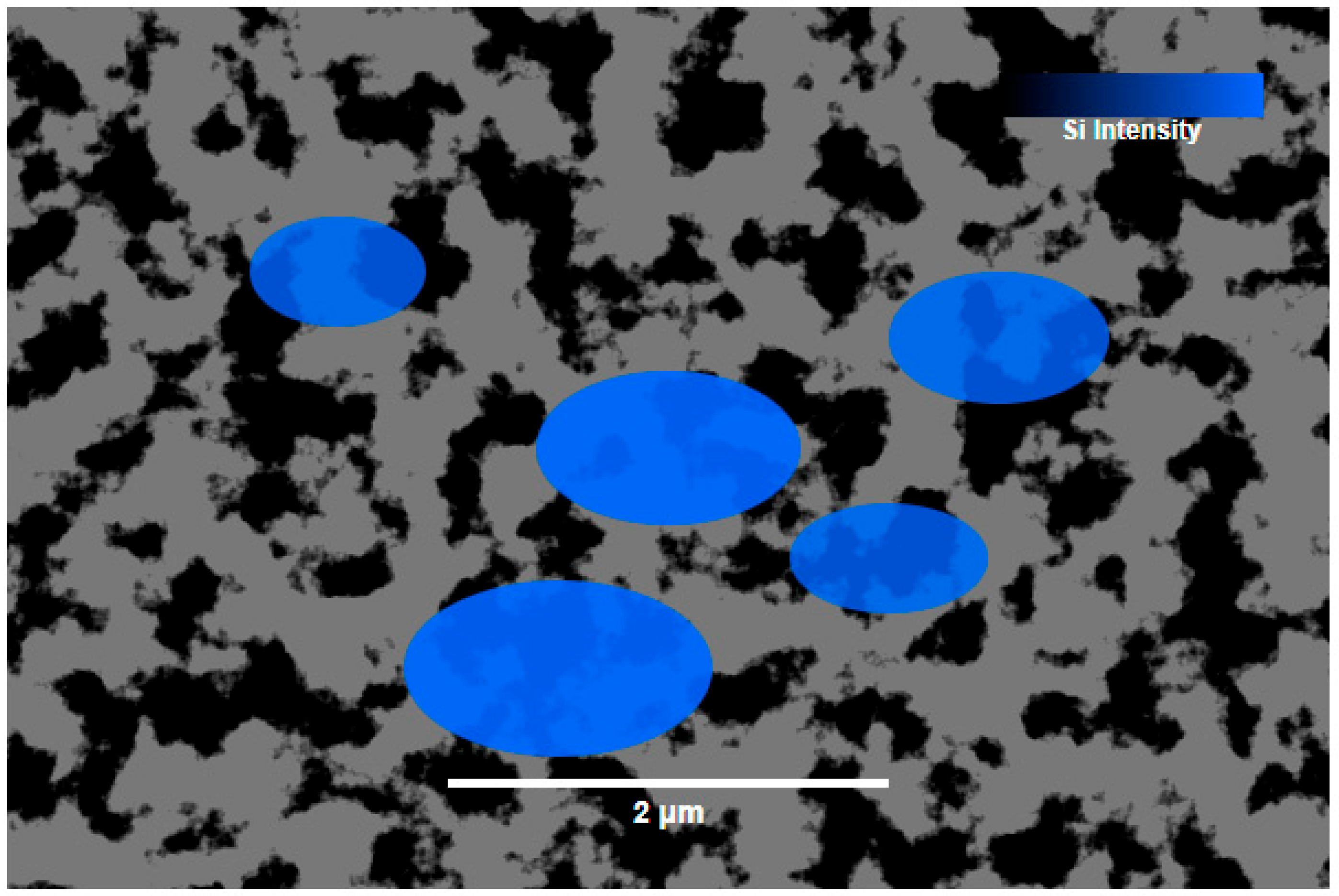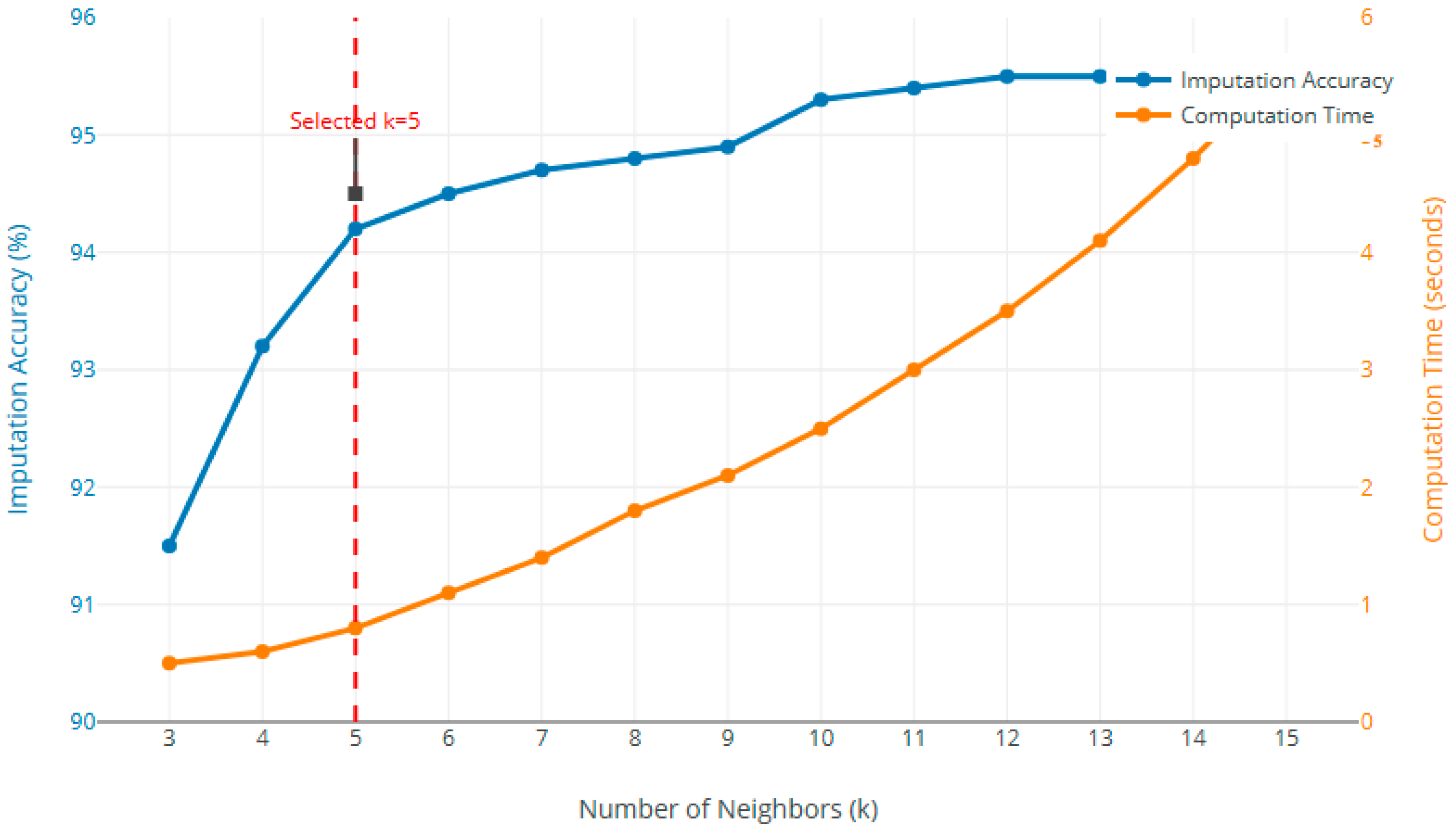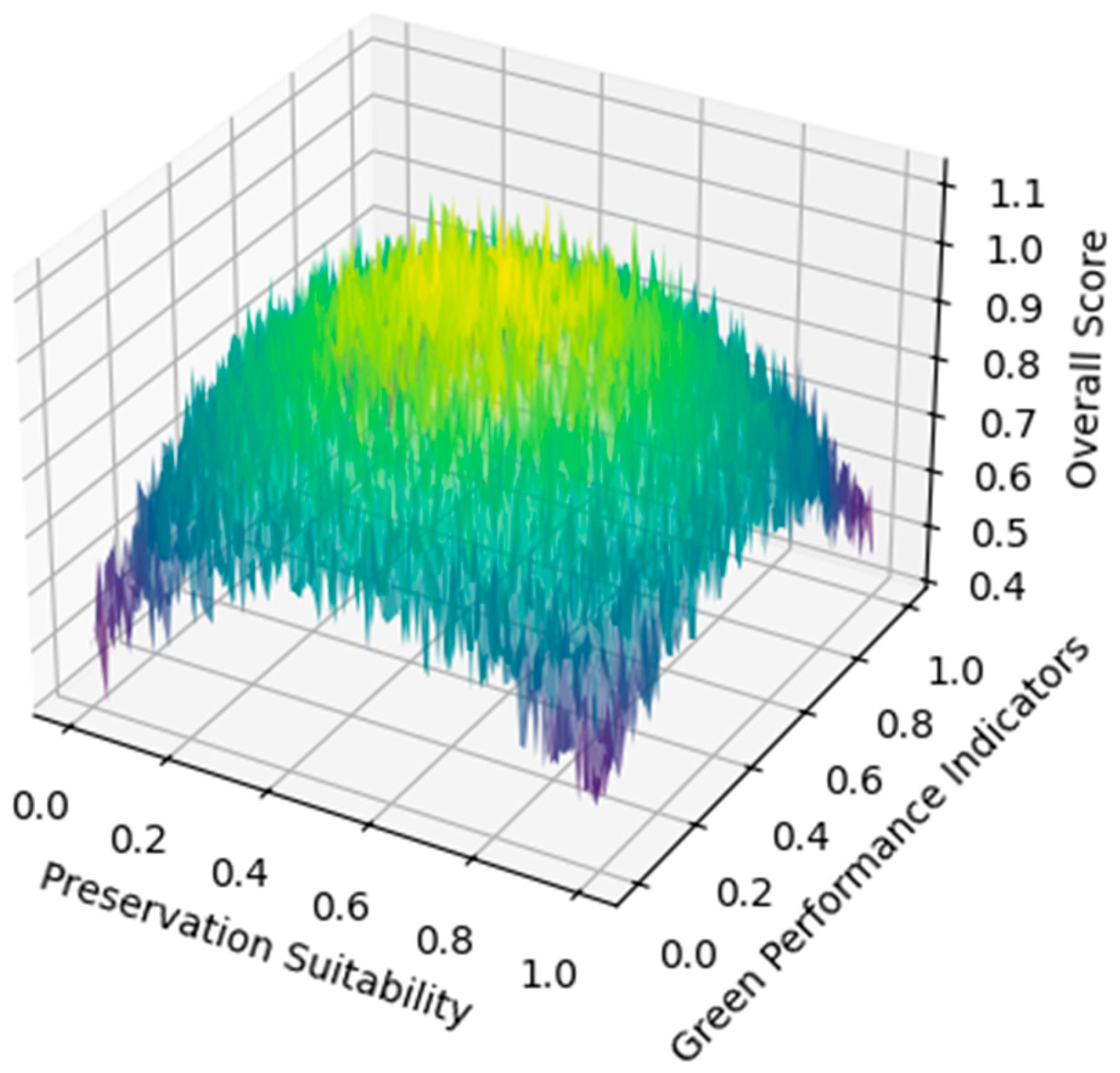The proposed methodology integrates GA-optimized XGBoost with LSTM networks to create a hybrid model for green material selection in ancient building renovation. This section details the technical implementation, beginning with an overview of the system architecture before delving into specific algorithmic components.
4.1. Overall Framework of the Proposed Methodology
The GA-XGBoost-LSTM hybrid introduces a groundbreaking synthesis of three computational approaches specifically adapted for heritage conservation challenges. This architecture combines GA-driven hyperparameter optimization that automatically adapts to regional climate variations with XGBoost’s enhanced feature selection capability incorporating heritage-specific metrics. The framework further integrates LSTM networks configured to capture material-specific degradation patterns such as nonlinear humidity effects. Unlike conventional single-model approaches in heritage conservation, this innovative integration enables the simultaneous optimization of immediate material performance and long-term degradation projections spanning over ten years. The system’s unique adaptation to conservation needs includes automatic adjustments for environmental factors like moisture regulation in humid climates while maintaining specialized metrics such as the Chemical Compatibility Index(
Figure 1).
The system architecture comprises three primary modules: data acquisition, computational core, and decision output. Material property datasets and environmental time-series data feed into parallel processing streams. The GA-XGBoost module processes static material characteristics including compressive strength (
), thermal conductivity (
), and moisture absorption rate (
), defined as:
where
represents maximum load,
cross-sectional area,
heat transfer,
material thickness,
temperature difference,
time,
wet mass, and
dry mass. These parameters form the feature space for XGBoost prediction.
As illustrated in Equation (9), Compressive strength (σc) is calculated as maximum load (Fmax) divided by cross-sectional area (A). This is crucial for evaluating structural materials in ancient buildings, where original materials often have lower but more compatible strength than modern alternatives.
Referencing to Equation (10), thermal conductivity (λ) relates heat transfer (Q) to temperature difference (ΔT) across material thickness (d). In Hunan’s climate with large diurnal temperature variations (ΔT > 15 °C/day), this property significantly affects both energy efficiency and thermal stress on historic materials.
From (11), we see that Moisture absorption rate (α) quantifies water uptake as percentage increase from dry (md) to wet (mw) mass. This is particularly important for humid subtropical regions where high absorption can lead to accelerated deterioration through freeze-thaw cycles or salt crystallization.
These calculated properties serve as key inputs to our GA-XGBoost model for predicting material performance.
The GA-XGBoost-LSTM hybrid architecture was specifically designed to address the dual challenges of static material property optimization and temporal degradation modeling inherent to subtropical heritage conservation. Empirical validation against alternative architectures revealed that the proposed combination achieves superior performance by leveraging the complementary strengths of each component: (1) XGBoost’s robust handling of high-dimensional material properties, particularly its ability to identify critical features like moisture regulation capacity (gain score 0.32) and thermal expansion coefficients (0.25); (2) LSTM’s effectiveness in modeling non-linear degradation patterns induced by prolonged humidity exposure and thermal cycling; and (3) GA’s efficient hyperparameter tuning across both spatial and temporal domains. This synergy is absent in single-model approaches, as demonstrated by the 21.9% improvement in prediction accuracy and 29.4% reduction in long-term degradation forecasting error compared to baselines. These material property formulas form the basis for the GA-XGBoost module’s feature space [
31], as described in
Section 4.1 of the paper. The parameters are essential for evaluating both immediate performance characteristics and long-term durability in Hunan’s subtropical climate conditions.
The LSTM module processes sequential climate data including temperature (), relative humidity (), and precipitation () recorded at regular intervals: These climate variables drive material degradation through thermal stress (from variations causing differential expansion), moisture damage (via -dependent capillary absorption and biological growth), and compounded wetting-drying cycles.
The thermal-moisture stress index (
) explicitly quantifies these synergistic effects, where the exponent 0.5 reflects nonlinear humidity impacts observed in Hunan’s architectural materials (see
Section 6.4). Environmental fluctuations represent extreme events that exacerbate degradation beyond steady-state predictions.
where
denotes ambient temperature change,
a material-specific humidity absorption coefficient,
time step, and
random environmental fluctuations.
Referencing to Equation (12), Temperature (Tt) at time t depends on previous temperature (Tt−1), ambient change (ΔTamb), and random fluctuations (ε). This captures both seasonal trends and daily variations that cause thermal stress in materials.
Relative humidity (RHt) considers previous humidity, As illustrated in Equation (13), absorption coefficient (β), and environmental changes. The β parameter is material-specific, reflecting how different historic materials (e.g., lime vs. cement mortars) respond to moisture.
Referencing to Equation (14), Thermal-moisture stress index (Γt) combines temperature and humidity effects, where the exponent 0.5 reflects our empirical finding that humidity has nonlinear impacts on material degradation in Hunan’s climate. This index proved particularly effective for predicting moisture-related damage in our case studies. These equations model climate variables driving material degradation.
The hybrid GA-XGBoost-LSTM architecture was developed to address the dual challenges of static material property optimization and temporal degradation modeling inherent to subtropical heritage conservation. Empirical validation against alternative architectures revealed that the proposed combination achieves superior performance by leveraging the complementary strengths of each component. As demonstrated in
Table 1, the complete hybrid model reduces prediction errors by 21.9% compared to standalone XGBoost and improves long-term degradation forecasting accuracy by 29.4% relative to LSTM-only implementations.
The architectural synergy stems from XGBoost’s robust handling of high-dimensional material properties, particularly its ability to identify critical features like moisture regulation capacity (gain score 0.32) and thermal expansion coefficients (0.25), which are essential for Hunan’s climate conditions. Meanwhile, the LSTM component effectively models non-linear degradation patterns induced by prolonged humidity exposure and thermal cycling, with its attention mechanisms identifying that summer humidity spikes above 80% RH initiate 73% of moisture-related deterioration. The genetic algorithm optimization bridges these components by efficiently tuning hyperparameters across both spatial and temporal domains, achieving a 62% reduction in search time compared to conventional grid search methods while maintaining solution quality.
4.2. Formulation and Optimization of GA-XGBoost for Material Property Prediction
The GA optimizes six key XGBoost hyperparameters: learning rate (
), maximum tree depth (
), minimum child weight (
), subsampling ratio (
), column sampling ratio (
), and L2 regularization term (
). The chromosome representation encodes these parameters as:
The fitness function evaluates prediction accuracy using weighted F-score (
) across
material classes:
where
denotes class importance weight,
precision, and
recall for class
. The GA employs tournament selection with size
, uniform crossover probability
, and mutation rate
.
The optimized XGBoost model predicts material suitability scores (
) through additive tree ensembles:
where
represents the
-th regression tree and
the feature vector for material
. Each tree contributes to the final prediction through leaf weights (
) assigned to terminal nodes:
where
denotes the set of leaves in tree
.
4.4. Multi-Objective Optimization for Balancing Preservation and Green Performance
The final decision module formulates material selection as a multi-objective optimization problem:
where
represents preservation suitability,
embodied energy, and
carbon footprint. The constraint functions
enforce material compatibility thresholds.
The multi-objective optimization framework explicitly models the inherent trade-offs between preservation requirements and sustainability goals through three primary objective functions: preservation suitability (
S(
x)), embodied energy (
E(
x)), and carbon footprint (
C(
x)). The constraint functions enforce critical material compatibility thresholds, including thermal expansion coefficient matching (±15%) and vapor permeability ratios (0.8–1.2) derived from conservation guidelines. The solution employs an enhanced NSGA-II algorithm with adaptive crowding distance to maintain diversity in the Pareto-optimal set, particularly important for handling the non-linear relationships between material properties and their long-term performance in Hunan’s humid subtropical climate.
The solution employs Pareto-optimal sorting with crowding distance to maintain solution diversity [
32]. The selection process combines objective weights (
) and decision-maker preferences (
):
The multi-objective optimization framework incorporates stakeholder inputs through weighted preference parameters (ρk in Equation (25)), with conservation experts, local craftsmen, and community representatives participating in structured workshops to establish these weights. This process ensures alignment with both technical requirements and cultural values. In the Hunan case study, the weighting process engaged heritage professionals emphasizing material authenticity (given 40% weight in the decision framework), sustainability experts focusing on environmental impact (30% weight), and local community representatives prioritizing functional performance and craft traditions (30% weight). The participatory approach was implemented through Delphi method consultations, achieving consensus after three iterative rounds of feedback that balanced these diverse perspectives while maintaining the model’s technical rigor.
This framework enables systematic evaluation of trade-offs between preservation requirements and sustainability goals, providing quantifiable metrics for informed decision-making in ancient building renovation projects.
